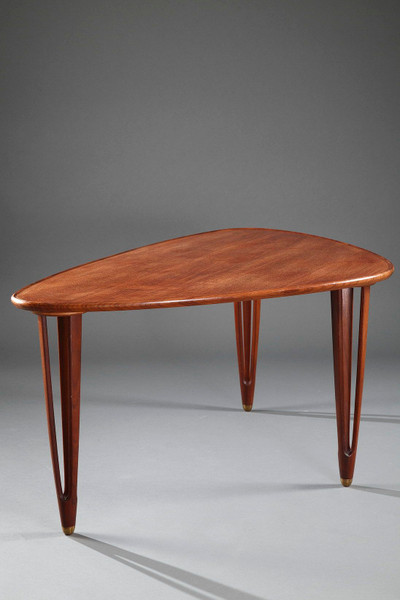A tripod coffee table with a teak top featuring rounded edges, resting on a base composed of three openwork, tapered legs positioned at the corners. Its simplicity and the balance of its fluid forms evoke the creations of the Danish designer and sculptor Isamu Noguchi, whose style is characterized by organic and expressive shapes. Stamped BC Mobler. Danish design. Born in the 1930s, Scandinavian design is linked to modernism, a movement marked by functionalism and the simplification of forms. It sought to humanize these forms through the use of natural materials such as wood, leather, and hemp, and to democratize them through the use of innovative techniques that allow for the mass production of objects at reasonable prices. The goal of Scandinavian design is to improve everyday life, and many designers have focused on the home and interior decoration. In their work, they maintain a strong connection with nature, evident in the blending of abstraction and natural forms. The first golden age of Scandinavian design spanned from the 1930s to the 1970s. Its founding fathers (Alvar Aalto, Arne Jacobsen, Hans Wegner, Verner Panton, Maija Isola, etc.) provided the model and the body of values upon which Scandinavian design continues to be based today: durability, functionality, and reliability. They also contributed less tangible values such as simplicity, joy, boldness, and everyday enjoyment, visible in the simple, graphic, and evocative forms of the new Scandinavian design. 20th century, circa 1960. Dimensions: W: 124cm, D: 71cm, H: 52cm.
- Reference :
- 1530
- Availability :
- Sold
- Width :
- 124 (cm)
- Height :
- 52 (cm)
- Depth :
- 71 (cm)
- Identify Exists:
- False




















